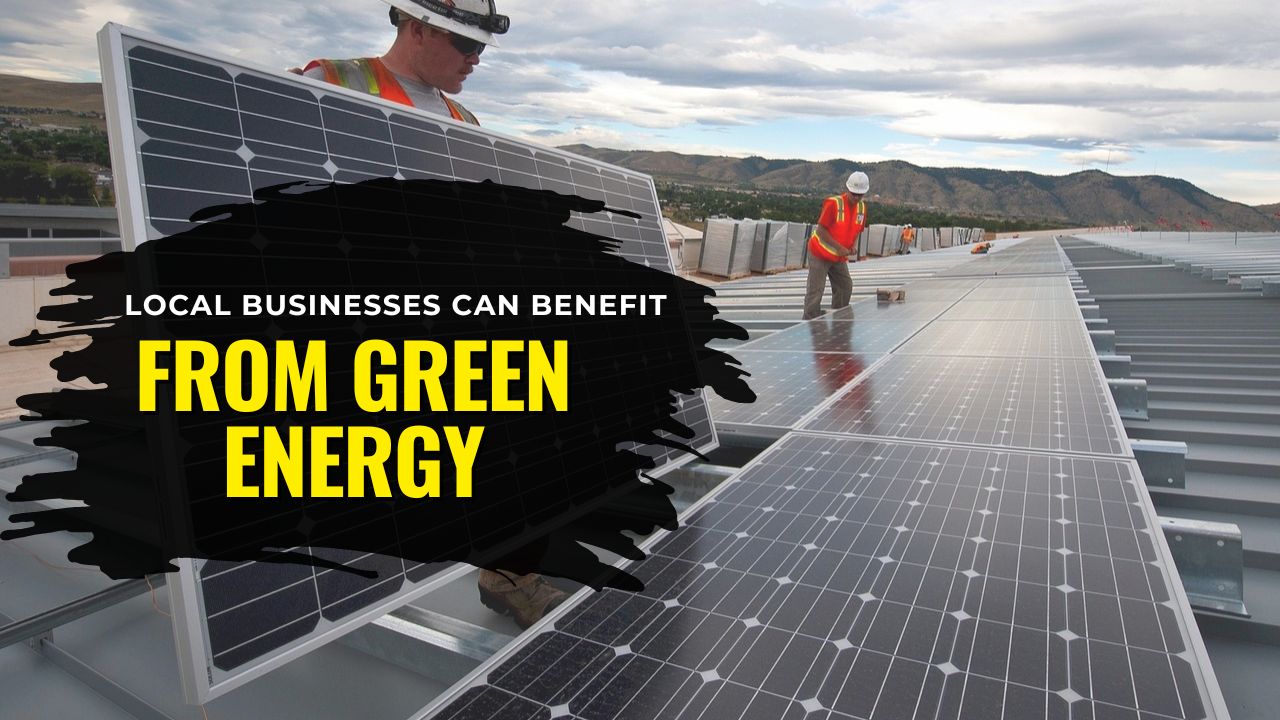Local businesses—shops, small restaurants, clinics, offices—are discovering that green energy is more than just a feel-good choice. It’s a route to lower costs, stronger brand standing, and new funding pathways.
In 2025, updated incentives and scaling renewables are making this transition more accessible than ever.
This article dives into every detail local businesses should know: financials, best practices, comparisons in a glance, and a 30–90 day action plan. (And we’ll end with three FAQs you’ll actually care about.)
Why 2025 Is a Turning Point for Local Green Energy
- Electricity demand is rising rapidly, pushing many utilities to increase rates during peak and off-peak hours.
- Renewable energy capacity is growing fast worldwide, making clean power more available and more affordable for small projects.
- Governments and local authorities are offering stronger incentives and financing tools to accelerate adoption by smaller businesses.
In effect, the timing is now: costs for clean energy are falling, incentives are strong, and the business case is clearer than ever.
The Incentives & Financial Tools That Make It Work
To make green energy viable, local businesses can take advantage of several key incentives and financing structures. Below is a breakdown:
1. Deduction for energy-efficient commercial buildings (179D-style deduction)
If a business upgrades lighting, HVAC systems, building insulation, or does whole-building retrofits, it can claim a deduction per square foot.
The amount scales depending on how much energy savings you achieve and whether certain labor rules (like prevailing wages) are met.
2. Investment Tax Credit (ITC) for clean energy systems
If a business installs qualifying solar, storage, or related systems, it can receive a percentage credit (e.g. 30%) on the cost of the system.
In some cases, bonus percentages are added if the project meets domestic content requirements or is located in certain regions.
3. Long-term financing via PACE (Property Assessed Clean Energy)
This lets a business finance energy upgrade projects (solar, battery, efficiency, etc.) and repay via property tax assessments over 15–30 years.
Because it’s tied to the property, payments often exceed the energy savings, making many projects cash-flow positive from Year 1.
4. Off-site procurement: PPAs and community solar
If a site isn’t ideal for rooftop solar (due to shading, orientation, lease status, or roof condition), businesses can subscribe to community solar projects or sign power purchase agreements (PPAs) for off-site renewable energy.
You get clean energy without physical installations on your roof.
What Local Businesses Actually Save & Earn- ROI Realities
- Efficiency measures (LEDs, controls, insulation) reduce energy usage. Every dollar trimmed from your energy bill is a dollar you don’t need to recoup via solar.
- Solar plus battery systems allow you to shave demand charges and shift load away from high-price times. In many cases, projects reach payback in under a decade (sometimes less) for small businesses with high energy use or high peak loads.
- Off-site clean energy (via PPAs or community solar) helps avoid capital expenditure and still gives you exposure to renewable power savings or stability vs. utility rate inflation.
- When combined, efficiency + solar + financing + tax incentives multiply your return and shorten payback.
Incentives, Tools & Use Cases
| Path / Program | Ideal For | What You Receive / Benefit | Most Common Use Cases | Key Considerations |
|---|---|---|---|---|
| Energy-efficiency deduction (179D-style) | Businesses owning or controlling building systems | Deduction based on energy savings and building size | LED retrofits, HVAC upgrades, envelope improvements | Must model savings; more savings = higher deduction |
| Investment Tax Credit (ITC) | Businesses investing in solar, storage or clean systems | Fixed % credit of the system cost, with potential bonus adders | Rooftop solar, battery systems | Qualifying definitions matter; bonus credits may require extra documentation |
| PACE / Long-term tax-assessment financing | Businesses wanting to cash-preserve capital | Long repayment terms (15-30 yrs) tied to property tax | Solar, HVAC, envelope, resiliency projects | Check local PACE availability and terms |
| PPAs / Community Solar | Businesses without good physical site or limited capital | Clean energy purchase contract or subscription | Off-site solar subscriptions, virtual PPAs | Contract length, pricing, supplier creditworthiness matter |
Step-by-Step- How a Local Business Can Go Green in 90 Days
- Gather data – Collect past 12–24 months of utility bills. Note monthly usage, peak demand, seasonal swings, time-of-use rates.
- Perform an energy audit – Identify lighting, HVAC, insulation, control system, and plug-load improvements.
- Model options – Simulate “efficiency only,” “solar only,” and “solar + battery” scenarios.
- Seek quotes / proposals – Get multiple vendors for solar, battery, PPA, community solar, and efficiency retrofits.
- Check incentive eligibility – Confirm whether your project qualifies for tax credits, bonus credits, and whether your location allows PACE financing.
- Select financing & structure – Choose among cash, loan, PACE, or tax equity/ownership or PPA.
- Install & monitor – Track energy performance, demand shaving, billing savings, system uptime, maintenance.
- Communicate – Use metrics (kWh saved, CO₂ avoided, cost savings) in marketing, local outreach, and internal messaging.
Risks and Mitigation
- Policy changes: Incentive rules may shift. Mitigate by locking in projects now, and working with vetted providers who guarantee compliance.
- Interconnection delays: Sometimes grid approval delays system activation. Build buffer in schedule and consider partial installations or phased rollouts.
- Mismatch between production and use: In some cases, solar output won’t line up with business loads. Batteries & load management systems help align production.
- Performance risk: A poorly installed or maintained system underdelivers. Mitigate by choosing experienced installers, warranties, and performance guarantees.
Business Types & Tailored Strategies
- Restaurants & food service: Use more refrigeration, cooking, ventilation—leading to high energy use. Add LED lighting, energy-efficient HVAC, kitchen hood controls, even battery backup for peak hours.
- Offices & small clinics: Moderate load but high value on reliability. Solar + battery helps reduce peaks and maintain critical equipment during outages.
- Light manufacturing / warehousing: Big roofs, large ceilings, high ventilation. Ideal for large solar arrays, high-bay LED lighting, and HVAC upgrades financed via PACE.
- Retail shops: Smaller footprint but visible to public. The reputational benefit of solar, plus reduced bills, helps both margin and marketing.
In 2025, the alignment of falling clean energy costs, strong tax incentives, and accessible financing tools has created what may be the most favorable window yet for local businesses to adopt green energy initiatives.
By following the steps above—starting with efficiency, layering in solar and storage, choosing the right financing, and telling your story—you can reduce costs, protect against volatility, enhance your brand, and contribute to a cleaner future.
FAQs
How soon can we see returns on green energy investment?
Returns vary by region, energy costs, incentives, and usage profile. Many well-designed local projects aim for payback in 5–10 years. Adding batteries and demand charge reduction can shorten that.
If we rent or lease our space, can we still benefit?
Yes. You can pursue lighting, HVAC, or control upgrades (if allowed by lease), or participate in community solar or green power contracts. The landlord may take on larger projects like solar or envelope upgrades, passing savings via rent or contract terms.
Does going green really help reputation or customer loyalty?
Yes. Many customers and community stakeholders look favorably on businesses that reduce carbon emissions and adopt renewable energy. Publicizing energy savings and environmental impact builds trust and positive perception.

